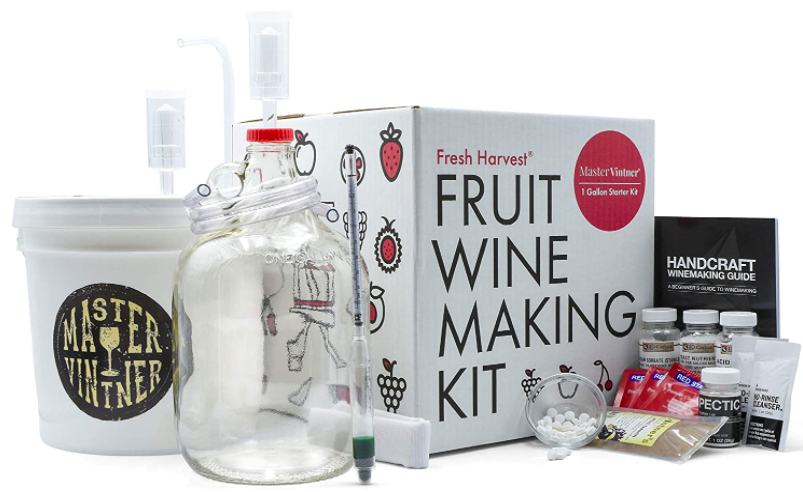Wine can be made from virtually any fruit but what is the best fruit to make wine? Grapes are the ideal fruit to make wine because they are full of juice, sugar and natural yeast – everything you need to make wine.
But what about fruits other than grapes? There are many other fruits which also create excellent wines. Which fruits other than grapes make the best wine? That depends on your taste and what style of wine you prefer.
Wine made from fruits other than grapes technically aren’t wine. They are often called “County Wine.” However, the possible flavors of wines you can make with other fruits are virtually endless. Country wines give you a chance to experience local flavors and wines that are hard to find commercially.
However, some fruits are better suited for wine making than others. That’s why it’s important to find a good recipe and experiment in small batches until you find your perfect brew.
Here is a guide to the best fruit to make wine to help you on your next winemaking adventure.
Grape Wines
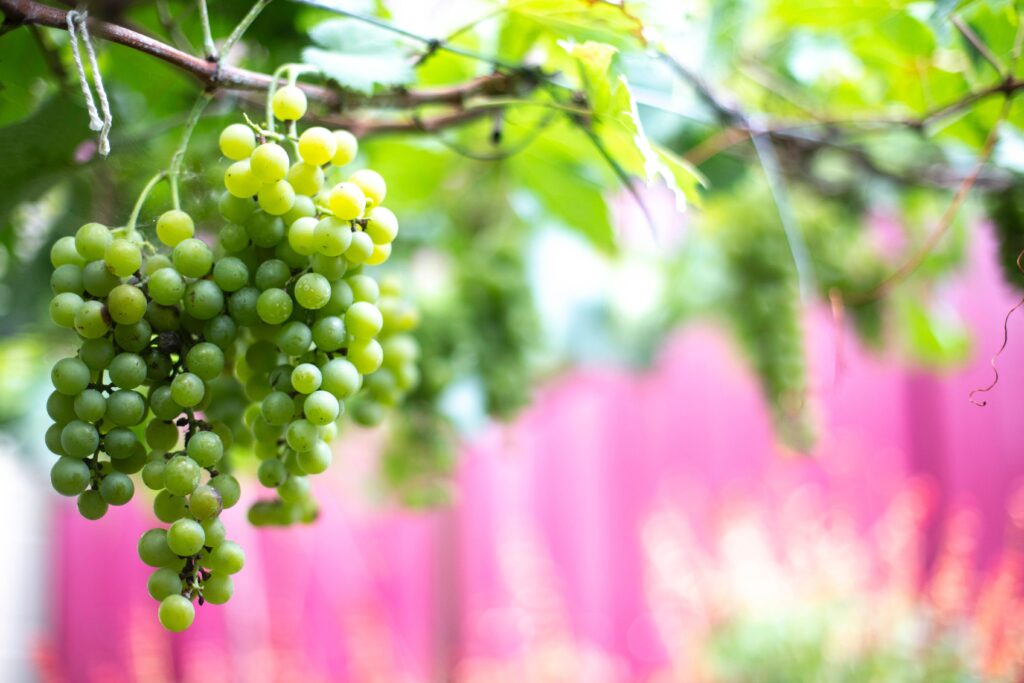
I will get to all the wonderful fruits that can make a great tasting homemade wine but first let’s talk about why grapes are used in winemaking more than any other fruit.
First, wine grapes (the kind specifically grown to make wines) contain a lot of sugar for their size. Remember, Juice + Sugar + Yeast = Wine. You usually don’t need to add sugar to your mix when using wine grapes. They also have a good naturally occurring acid content so you can avoid adding an acid blend too.
Second, grape skins, stems and seeds have tannins. It’s the tannins (aka polyphenols) that create that dry mouth feel commonly associated with many wines. These tannins also act as antioxidants to help naturally protect the wine from spoiling.
Third, wine grapes have a great flavor profile. The fermentation process can destroy much of the natural fruity flavor in most country wines. However, wine grapes tend to hold their flavor profile better than other fruits.
Finally, wine grape skins have a natural yeast that aids the fermentation process. The first wines ever made probably did not require extra yeast to be added. The yeast found naturally on the grapes (and on the feet of the grape stompers) was enough to get the fermentation process going.
But enough about grapes. Let’s talk about what other fruits make good wine.
Types of Fruits
There are a variety of different types of fruits that make a great alternative to grape wines.
Pome Fruits
Pome fruits are the types of fruits with their seeds inside an inner paper-like core. Apples and Pears are Pome fruits. These fruits are usually harvested in the fall.
Berries
Berries contain many seeds that can either be on the inside or outside of the fruit. That’s a broad definition. In fact, you may be surprised by some of the fruits below that are technically berries.
Berries can produce a variety of flavors and colors but often make sweet wines. The darker the berry, the more full-bodied the wine will be. They also come packed with health benefits such as antioxidants.
Berries make a great summertime country wine.
Drupes (AKA Stone Fruits)
Drupes or Stone Fruits are fruits with a hard pit in their center surrounded by a fleshy outer core. They are very juicy and sweet. The skin can be fuzzy or smooth. They are highly seasonal because they do not ripen once picked. So they have to be picked at peak ripeness and they won’t last long.
Citrus Fruits
Citrus fruits are often described as tasting like “sunshine” and tend to produce fresh, acidic and mineral-tasting wines. But they can also be used in sweeter wines. Fermentation is harder to control and alcohol level is usually on the lower end. It’s important to note that the rind contains a lot of the flavor of citrus fruits and many recipes call for zesting.
These wines will pair well with foods cooked in citrus like seafood and chicken but they also pair well with fruits and cheeses too. Citrus wines tend to be relatively inexpensive recipes as citrus is readily available and cheap.
Tropical Fruits
Tropical fruits are by definition any fruits produced in the tropical regions of the world. However, I classified many with their non tropical counterparts.
For example, a pomegranate is a tropical fruit but technically it is a berry. This section of fruit wines includes other tropical fruits that aren’t easily classified in the other categories.
Exotic or tropical fruit wines have similar alcohol content as grape wines so enjoy accordingly. Their wines can be dry or sweet and white or red.
Melons
Melons typically come into season between May and September. They have some of the highest water content of fruits so recipes for these wines will call for adding less water than other fruit wine recipes.
Making wines from melons can be challenging. While they have a lot of water content, they lack body. The fermentation will strip much of the flavor, aroma and sweetness out so they are often best when paired with other flavorful fruits such as berries.
Making Wine From Pome Fruits
Apple Wine
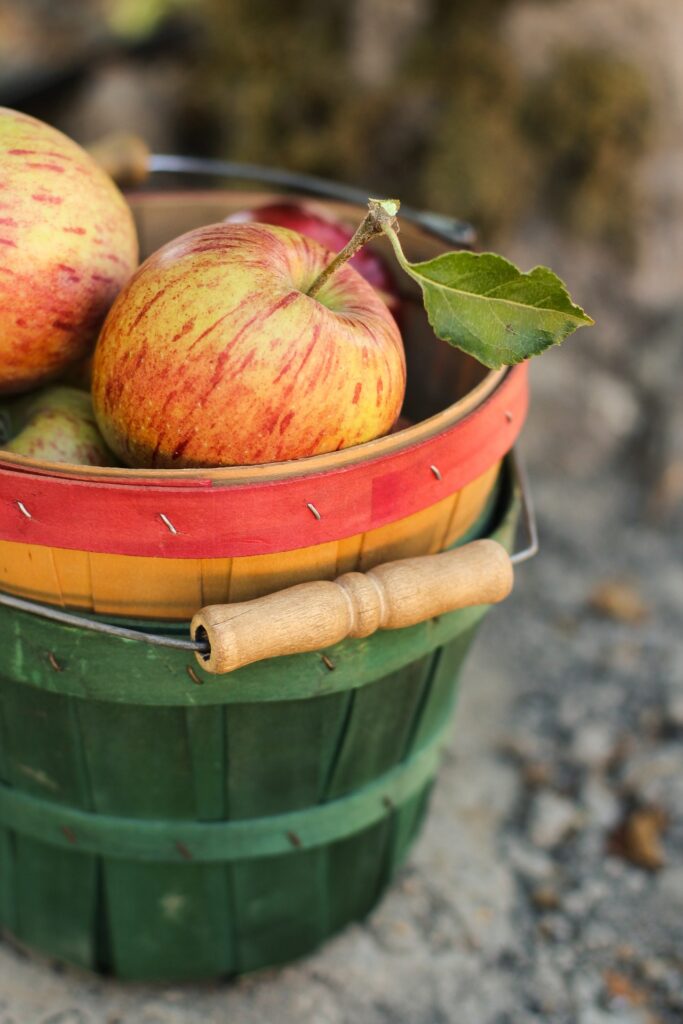
Apple wine is technically cider but it’s still fruit wine to me. It’s the perfect fall harvest wine. Sweeter varieties of apples like Red Delicious or Fuji will yield a sweeter wine while Granny Smith or Honey Crisps will make a tarter-flavored wine.
If you are juicing your own apples, you will need a lot of them. You will also need to add sugar to get the ABV up above 5%. Mix varieties and flavors to experiment until you find your signature recipe.
If you are using store bought apple juice make sure it is preservative free (pasteurized is ok).
The wine that apple juice makes will be white. You can also carbonate it to make a sparkling apple wine. Apple wines are best when aged 2 or more years.
Pear Wine
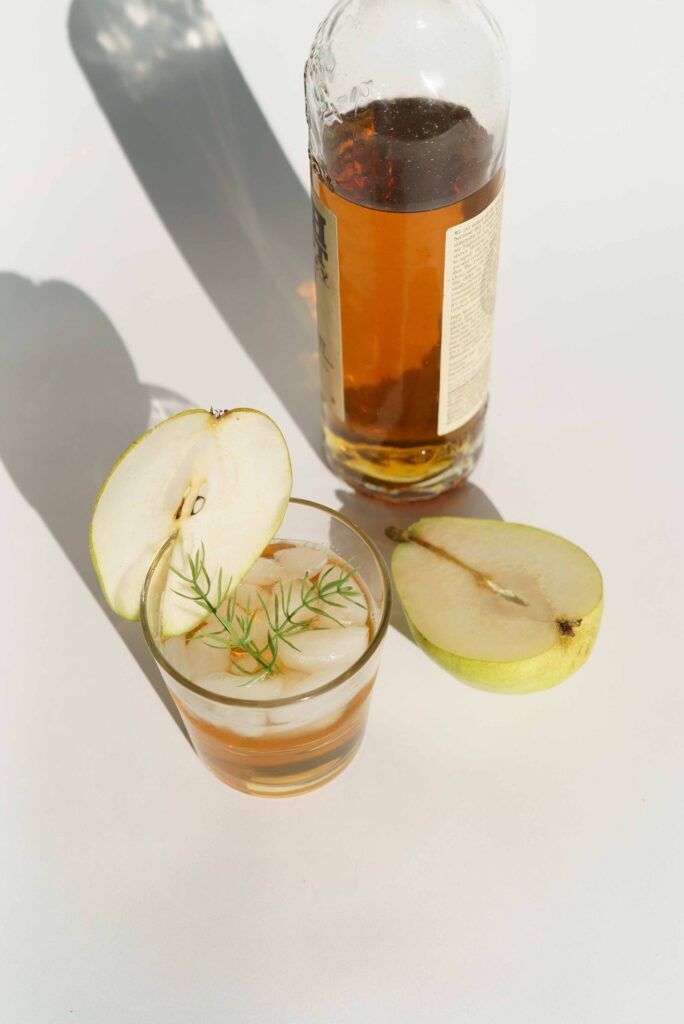
Pear wine is a light colored, sweet wine. It is often best when combined with berries rather than on its own. That’s because pears don’t have too much flavor unless you ripen them (or even wait until they are slightly over-ripe).
Making Wine From Berries
Blackberry Wine
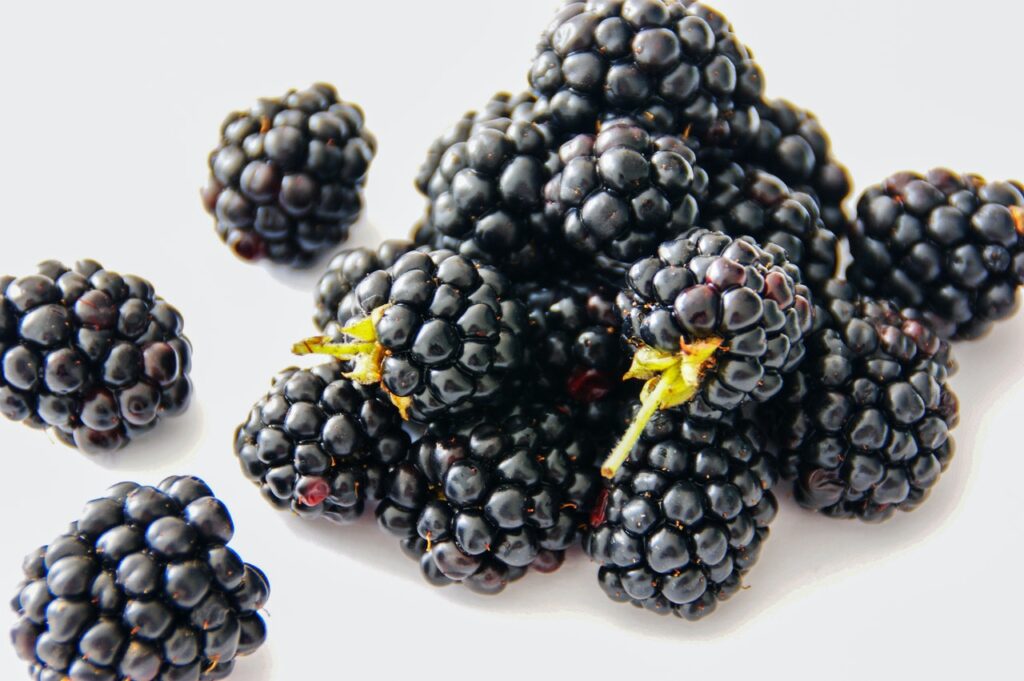
Blackberries create a deep color and rich flavored-wine, not unlike a merlot. They naturally have a good acid level. Frozen blackberries will work just as well as fresh blackberries which make them a convenient fruit wine that you can make any time of year.
Try blending some apple or pear with blackberries for a delicious and unique tasting wine. Blackberry wine is best when aged 2 years or more.
Blueberry Wine
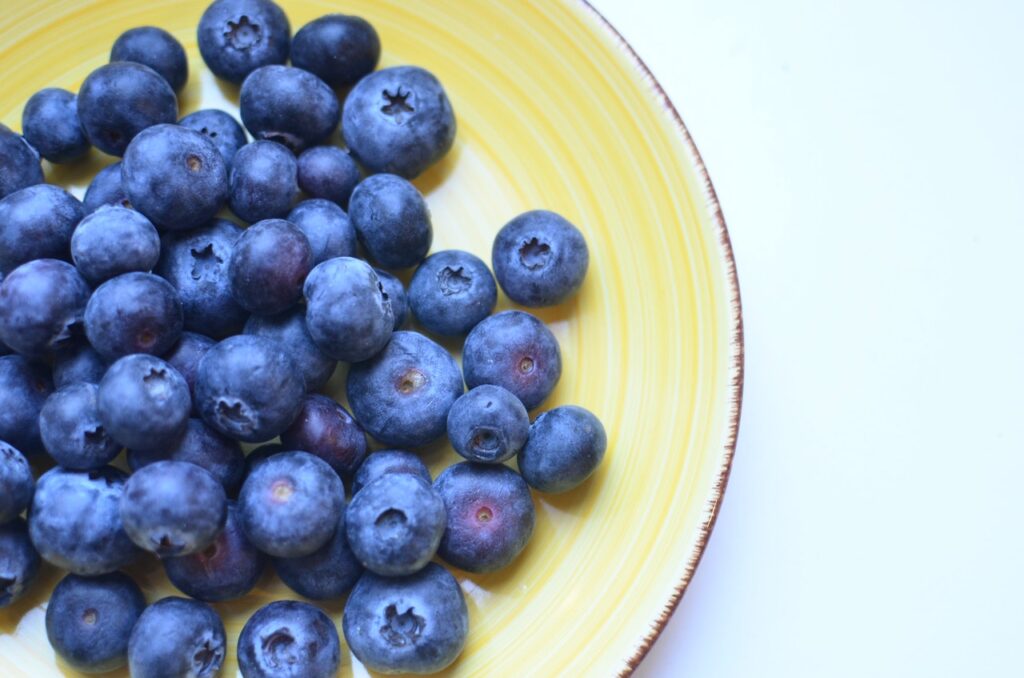
Blueberries make a lighter, rose-style wine. Your wine will have a tangy and sweet flavor profile. Blueberries tend to be low in sugar and high in acid (more acid makes a sweeter wine) for a good balance. Blueberries are also high in nutritional value and are often described as the king of antioxidant fruits.
Blueberry wine is a good option for beginners because blueberries are very forgiving. It’s hard to mess up the recipe. Either frozen or fresh blueberries will work. However, you will need to add water to supplement the volume of juice. Blueberry wine is generally ready to drink after one year.
Strawberry Wine

Strawberry wine is one of the most popular “summer” wines. The taste can be mild or sweet and will taste good even when “dry” unlike other country wines. Strawberry wine colors will range from light pink to vivid red depending on the recipe. If your strawberry wine has turned orange, it is likely due to oxidation or low acid levels which can be corrected.
Fresh, ripe strawberries are best but frozen will work just as well. Just be sure to discard any leaves and stems if you are using fresh strawberries. Also cut out any damaged pieces.
Some home wine vintners prefer a young age while others let it age for at least one year.
Raspberry Wine
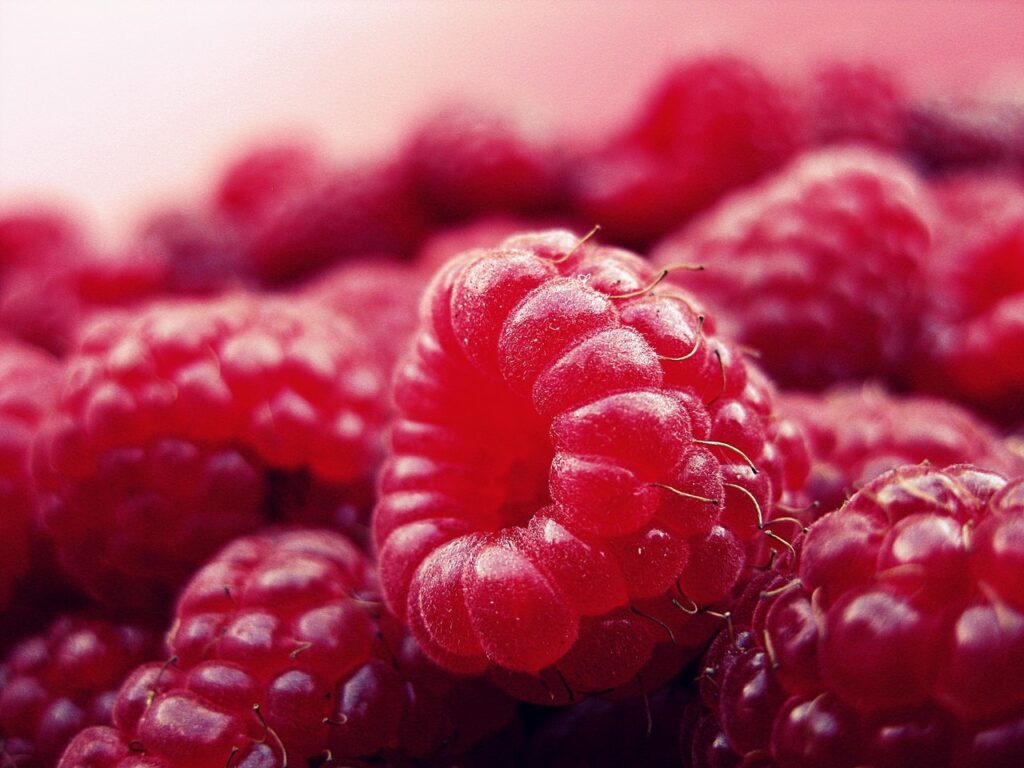
Raspberry wine recipes create a semi-sweet wine. The recipe may not require as much water to be added as the raspberries themselves usually have a lot of juice. It’s best to keep the additional water to a minimum or you risk making a weak flavored batch. Raspberries can be tart so your raspberry wine recipe will call for sugar.
Raspberries are often blended into wines such as Pinot Noir so you can expect some similar flavors. You can usually get raspberries fresh year round but they are best in the summer. Black raspberry wine is especially delicious but the berries will cost you more.
Elderberry Wine
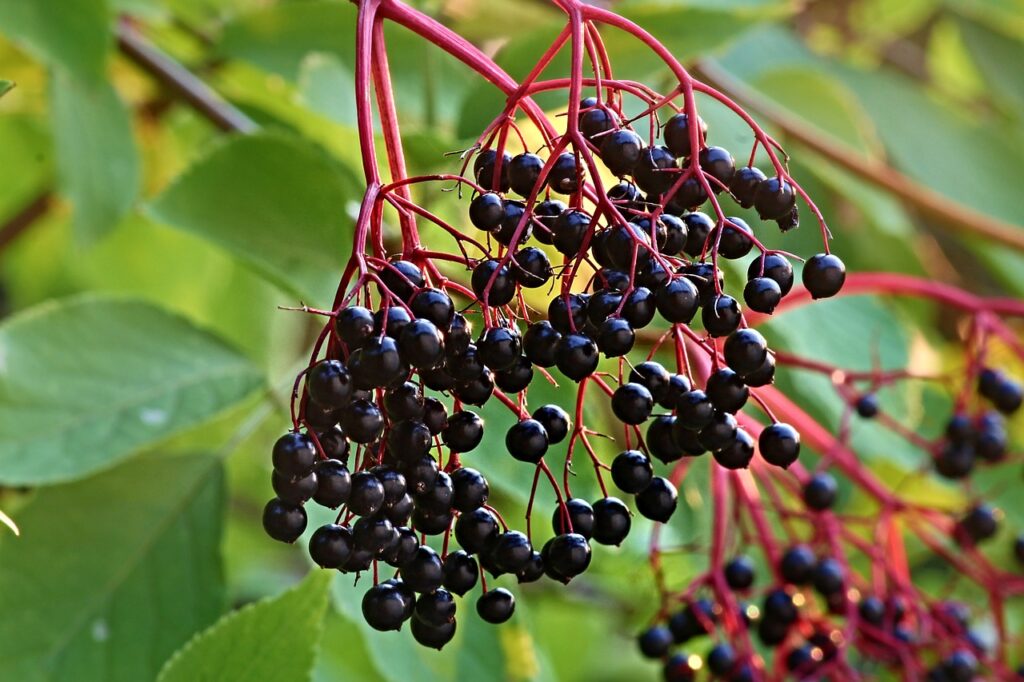
Elderberries are similar in color and flavor to blackberries. They create a dark colored wine. Elderberries are more balanced in acids and tannins like grapes so you will get a nice mouth feel from them. Try them in a sparkling version for an excellent wine.
Also, elderberries are full of health benefits that are on trend and are found in many cough cold products now. Some people like to warm elderberry wine to help with a sore throat.
Note however, that elderberry stems, roots and even the seeds are poisonous. Some home vintners suggest cooking before fermenting but it’s probably best to buy the juice instead.
Black and Red Currant Wine

Currants are summer shrub berries that are similar to gooseberries. They have a sweet and acidic flavor. They also have some tannins on the skin which make them good for winemaking.
However, currants are hard to find but you can look for them in your local farmer’s markets.
Pomegranate Wine

Pomegranate wines will have a deep red color like red grape wine but that’s where the similarity ends. They are popular in the Mediterranean and Middle East regions, but some describe Pomegranate wines as an acquired taste.
Pomegranates are high in antioxidants but they are not sweet and tend to make a very dry wine. Although they are very acidic, they lack natural tannins. So you should expect to add lots of sugars and other ingredients.
You will have to gather a lot of pomegranate seeds to make even a small batch of wine so it’s best to use an unpasteurized pomegranate juice like Pom Wonderful.
Kiwi Wine
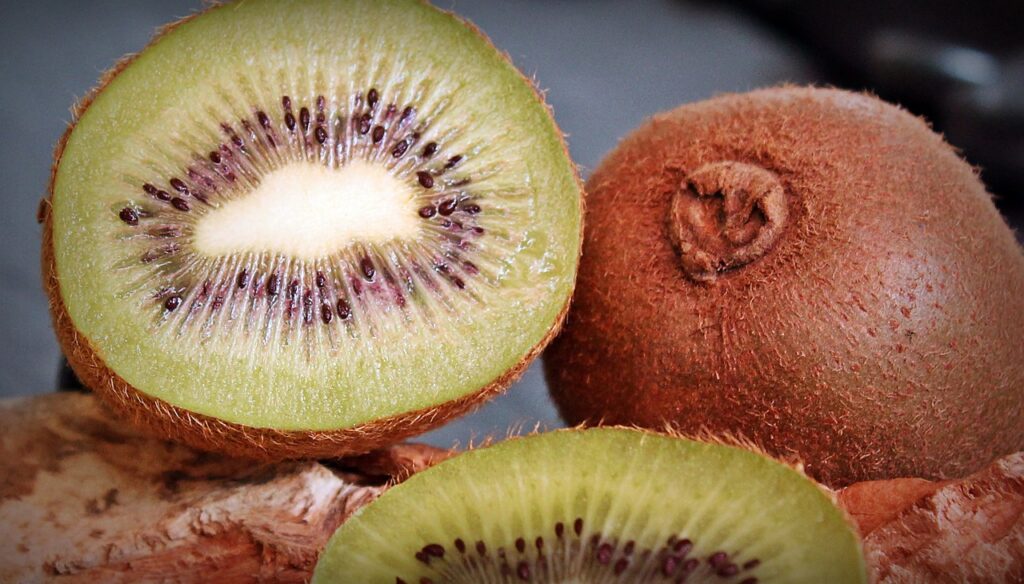
Kiwis are technically berries. They make for a green-golden wine that is tart, crisp, fruity and acidic. Kiwi wines can be similar to a dry reisling. It’s a great Summertime wine but you can enjoy it year round
Try pairing kiwis with some strawberries for a delicious and refreshing summer wine.
Pumpkin Wine
Yes. Pumpkin is a fruit and its wine is a halloween and thanksgiving favorite. Pumpkin wine can be made dry or sweet. It can also be made sparkling like its apple wine fall cousin. Try adding clove to your recipe.
You will need to ferment the pumpkin unless you can find pumpkin juice. A good recipe will only taste slightly “pumpkin-y.”
Gooseberry Wine
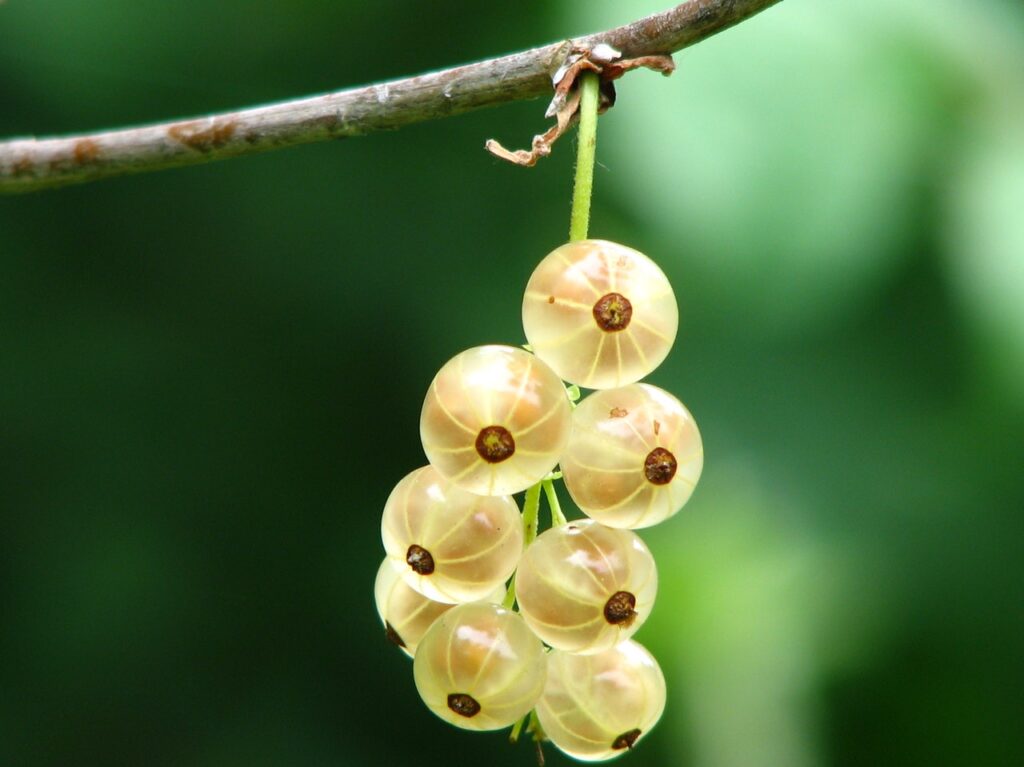
Gooseberries are extremely tart and high in acid content. They are pretty hard to find so you may need to grow and pick your own. Always wash and remove the stems.
Some home brewers say Gooseberry wine is very similar in taste to rhubarb wine.
Making Wine From Stone Fruits (AKA Drupes)
Peach Wine
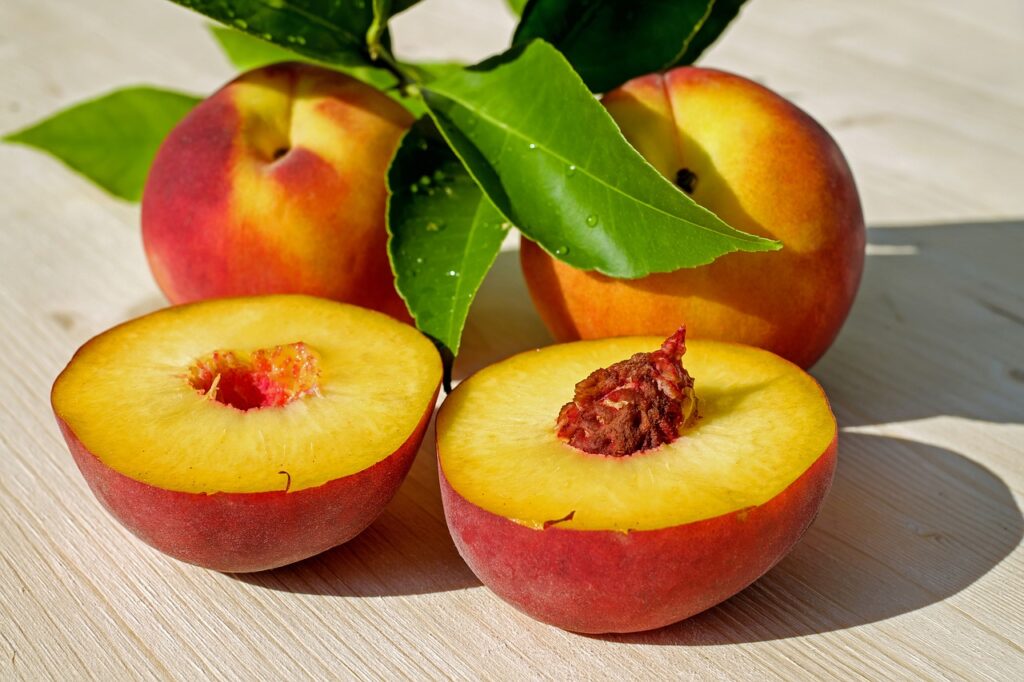
Peach wines have a great aroma and are full bodied. Peach wine recipes tend to be on the sweeter side and these wines are often used in desserts like this Georgian Peach Wine Cake recipe.
Yellow-flesh peaches will have more acidity and tartness than white peaches Some home brewers avoid frozen peaches as they tend to brown as they thaw. Discard the pits which contain cyanide but keep the skins which hold a lot of flavor.
Peach wines are best when aged 2 years or more to give it time to mature.
Apricot Wine
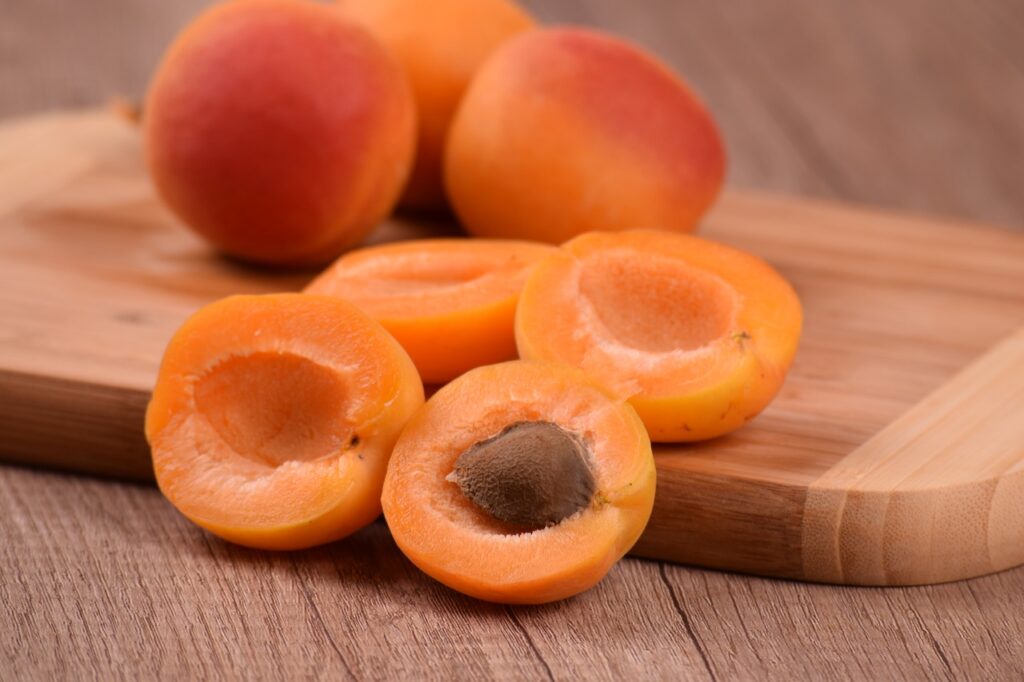
Apricot wines have a subtle sweet flavor. They can be a little tart and full bodied. Apricot wine will have a yellow or even red tint.
Apricots are similar to peaches when it comes to winemaking. Avoid frozen ones and their pits.
Also consider adding some preservative-free dried apricots to your must for a flavor boost.
Plum Wine
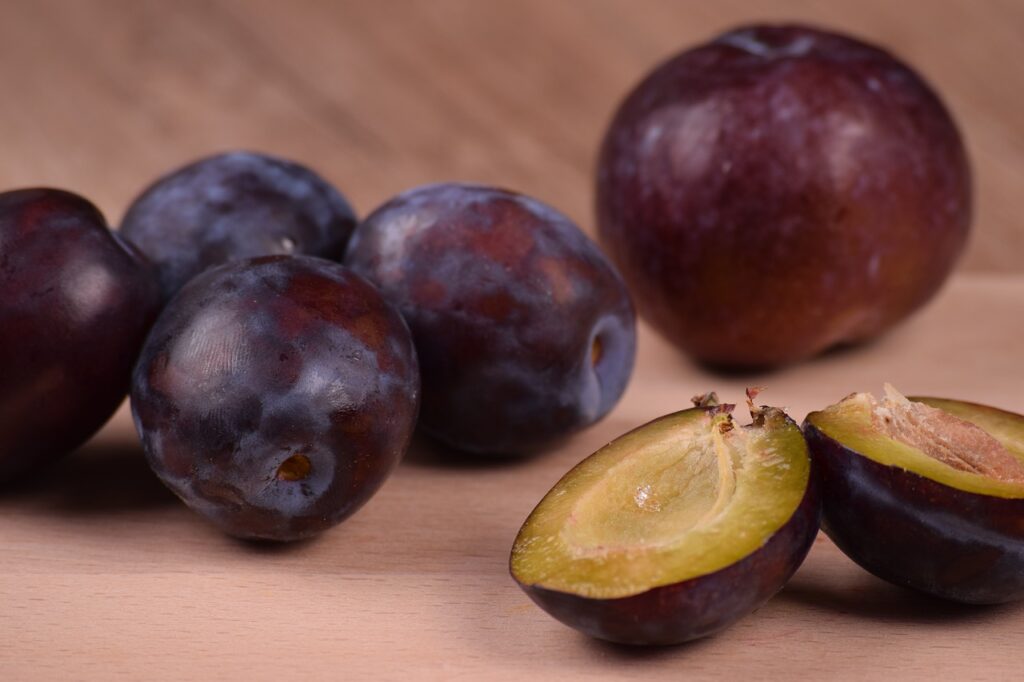
Plum wine is a favorite dessert beverage in Japan. It’s called umeshu which means fruit liquor in Japanese. It’s made by steeping plums in white liquor and sugar and it’s technically a liquor. However, you can make a true wine with plums just like any other fruit.
True plum wine will have a blend of sweet and sour flavors. These wines may have several digestive benefits. Plums can be found in hundreds of varieties. The darker the plum, the sweeter and less tart the flavor.
Most plum wine recipes make a gold color wine and taste best when aged a year or more. Typical plum wine recipes yield an alcohol content of 10-15% so be careful, it can pack a kick.
Cherry Wine
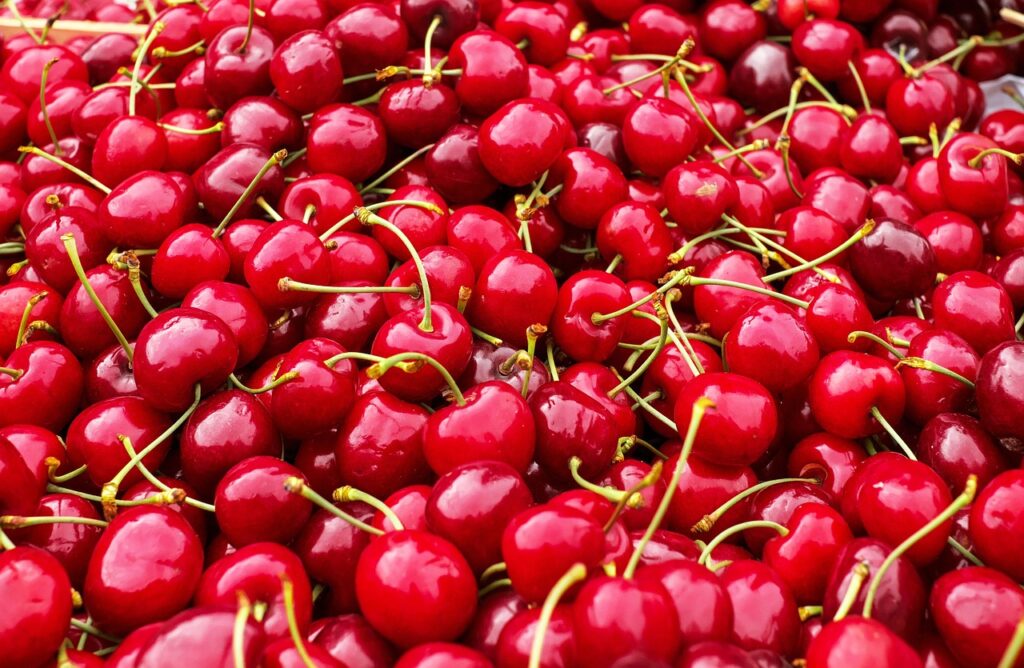
Cherries range in flavor from tart to sweet depending on the variety. Cherry wine can be dry, semi-dry and sweet. Sweet cherry wines tend to be bolder, fruity and full bodied.
You should expect to let your cherry wine age at least 2 years for best results.
Nectarine Wine
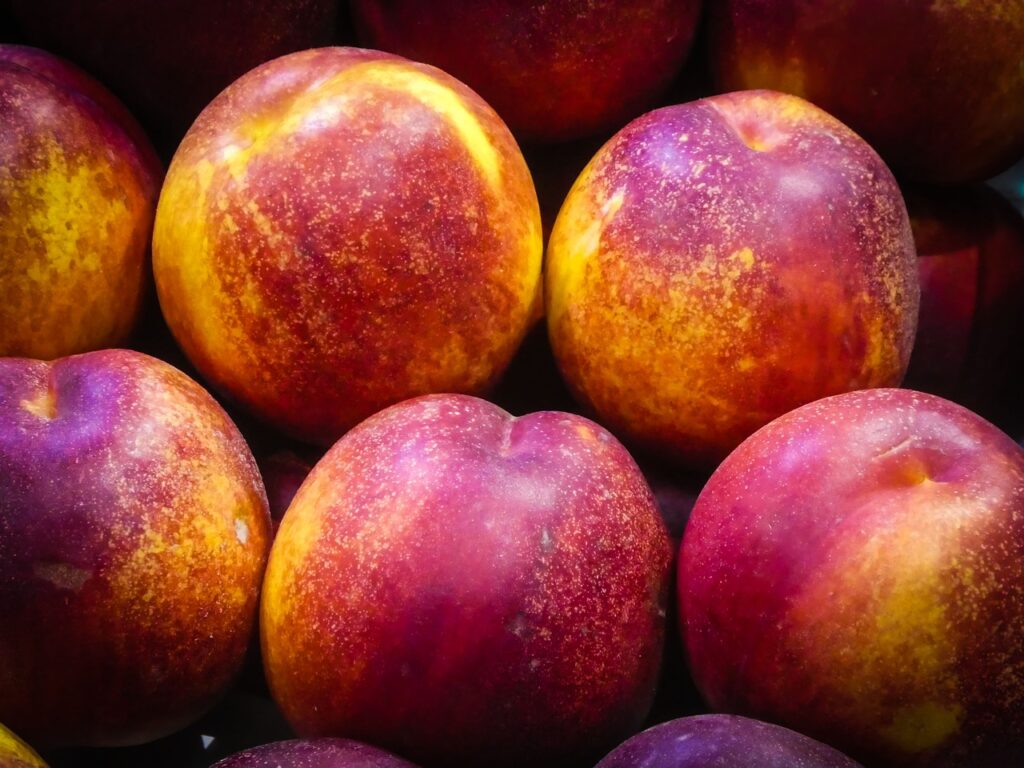
Nectarines are actually a plum and peach hybrid. Their wines will have a bright yellow color and a sweet taste. Nectarines are low in acid so you will need an acid blend.
Nectarine wines aren’t as popular as other stone fruits so it may be hard to find a nectarine wine recipe you like. Keep searching though because it will be worth the trouble.
Making Wine From Citrus Fruits
Orange Wine
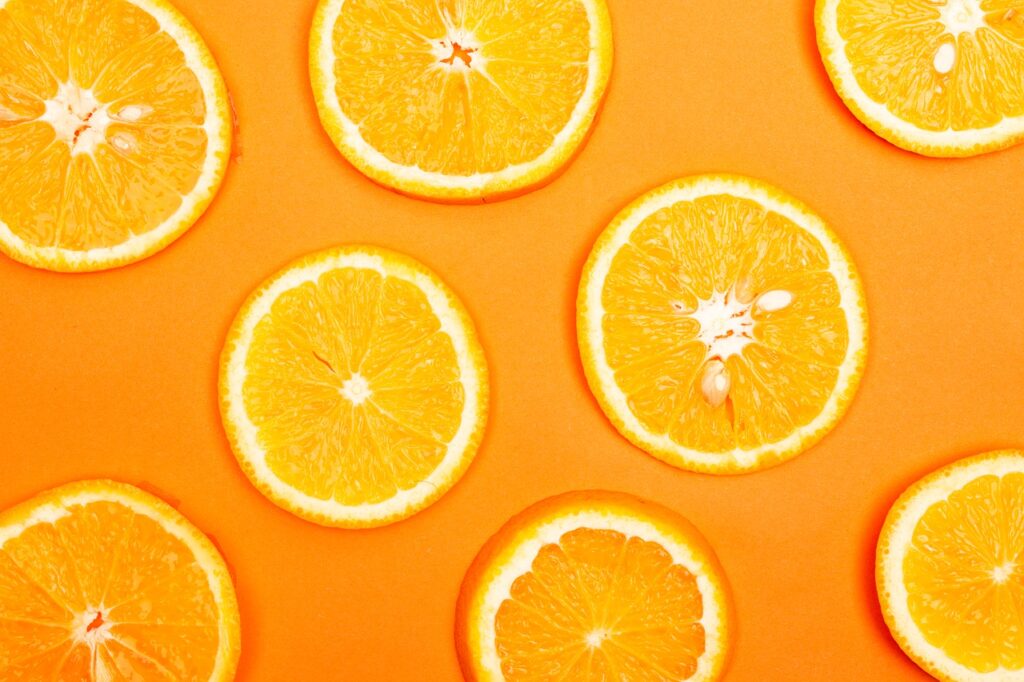
The term “orange wine” can refer to white wine with a deep orange-hued finish by leaving the grape skins and seeds in the fermentation stage. As opposed to wines made from oranges.
Wines made from oranges create a great fruity, sipping wine. You can use store bought orange juice but make sure it is preservative free. It’s also better to include pulp. You will need to include orange zest in your recipe if you want that truly orange flavor in the finished wine.
Caution: many home brewers avoid orange juice in wine making because it tends to come out “nasty” if not done just right.
Lemon Wine
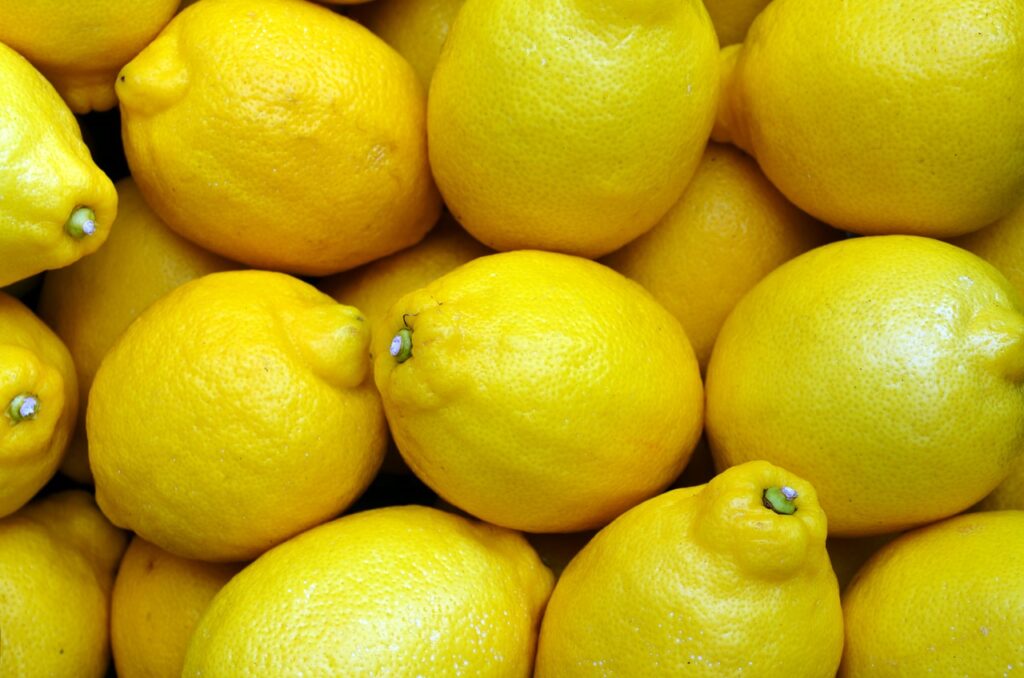
Lemon wine should not be confused with limoncello which is a lemon liquor from the Amalfi Coast region of Italy.
Wine made from lemons, AKA “Skeeter Pee”, can taste like “sipping sunshine” if done correctly. It will taste something like a crisp riesling and a hard lemonade. Many lemon wine recipes call for adding raisins and or honey to aid the fermentation and provide some sweetness.
Fermenting may require daily stirring (or even twice daily) to get the process going so be prepared for some extra work. Lemon wine can be aged for years and the flavor will change over time.
Lime Wine
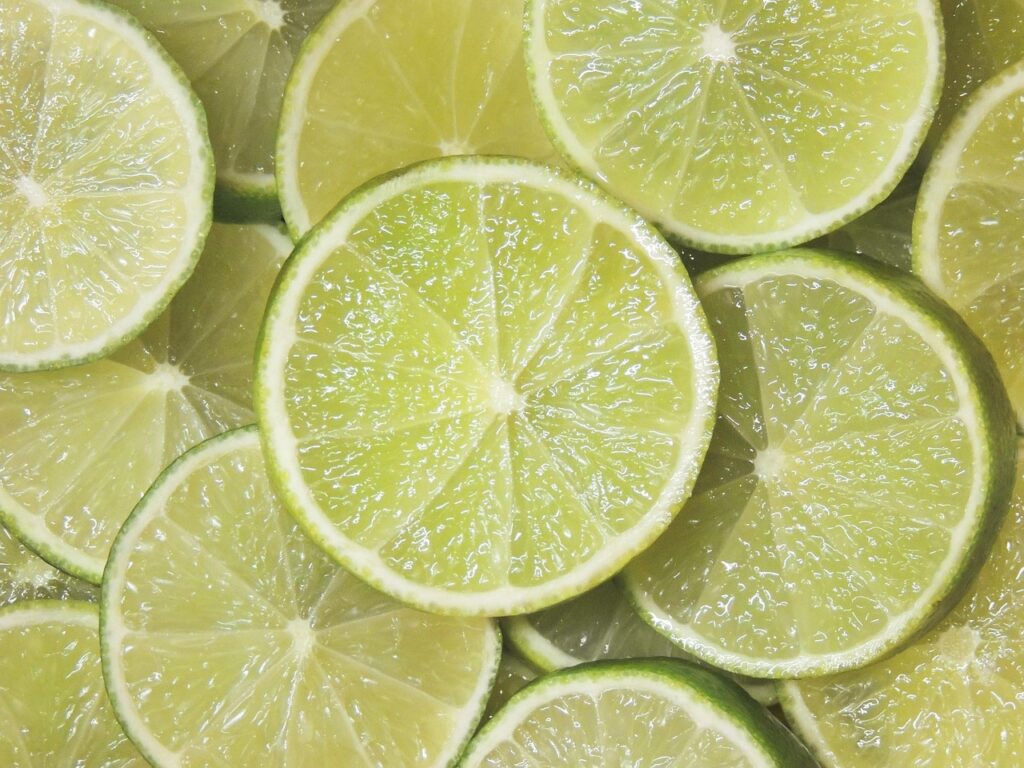
Lime wine has an aroma that can resemble a margarita. The color will be an almost fluorescent lime green. Use lime zest to get that lime flavor but don’t over do it. A little zest goes a long way.
It will be a mouth puckering flavor if you don’t use enough sugar so you will likely need to back sweeten it.
Making Wine From Tropical Fruits
Banana Wine
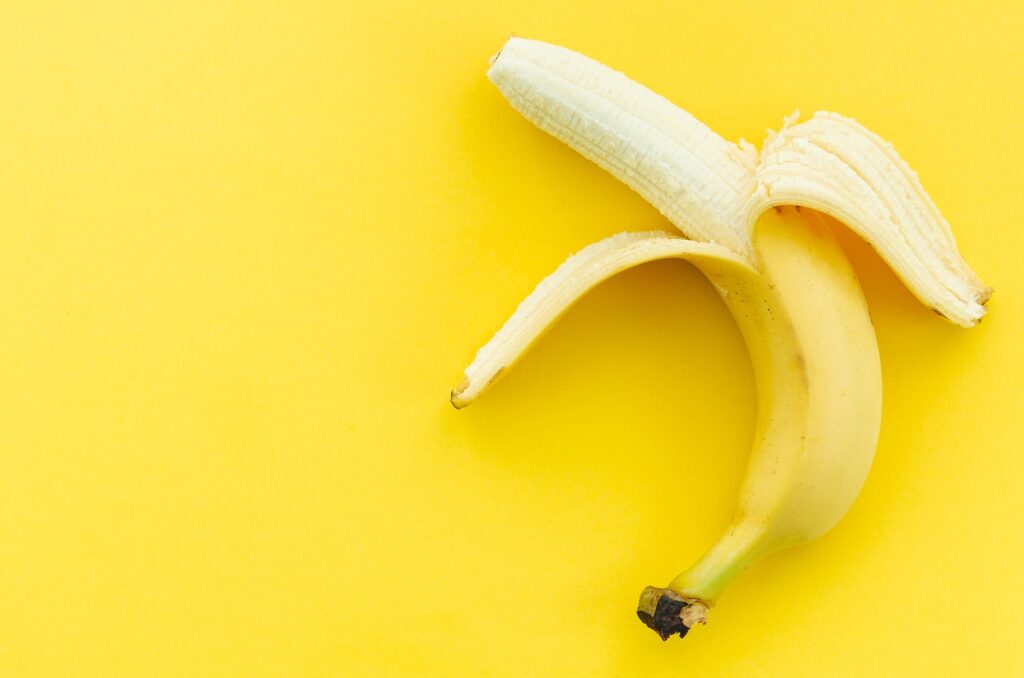
Banana wines are popular in Africa and the Philippines but they are not generally commercially available so you will have to make it if you want to try it for yourself.
Bananas make a wine that is a brilliant golden yellow color despite looking like “dirty dishwater” at the start of the fermentation process. It has a strong fruit flavor, but not an overpowering banana flavor that pairs well with pork. Alcohol content can get very high (around 20% ABV!) due to their naturally high sugar content. You can age them for up to a couple of years to improve the overall full bodied flavor.
The bananas should be ripe but not overly ripe (like you would use for banana bread for example). There’s a lot of flavor in the peel but some suggest avoiding them in your recipe because they are often treated with chemicals to lengthen their shelf life. You can make banana wine any time of year inexpensively. Bananas are also great to blend with other fruit wines, especially strawberries.
Mango Wine
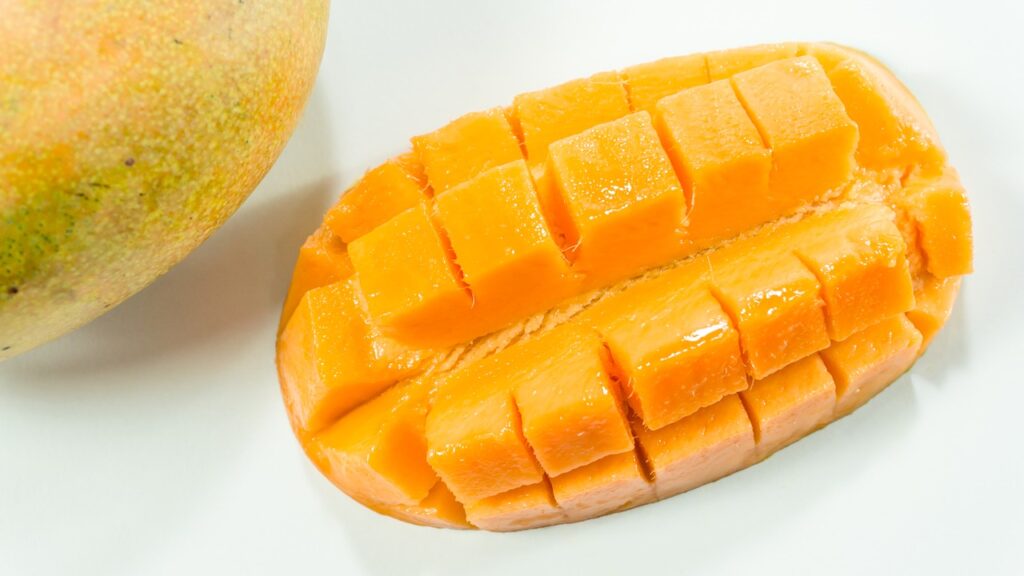
Mango wine should be slightly sweet with fragrant fruit aromas. Its color can range from a clear yellow tint to an opaque orange. It is not unlike a semi-dry grape wine. It also has a higher alcohol content than many other fruit wines. Some recipes will end up more like a mango mimosa so be sure you know what the finished product will be like.
However, it takes a lot of mangoes to make wine due to the large pit and the high pulp content. Try pectin enzymes to extract more juice from your mangos. Processing the seed and skin is laborious but worth it according to some home vintners. Try canned mango pulp instead if you don’t want the extra effort. Note that your fermenting juice will be cloudy and take months to clarify but you can use bentonite to speed up the clarification process.
Mango wine can be expensive to make but it pairs well with other less expensive fruits, like peaches, to cut down overall cost.
Pineapple Wine
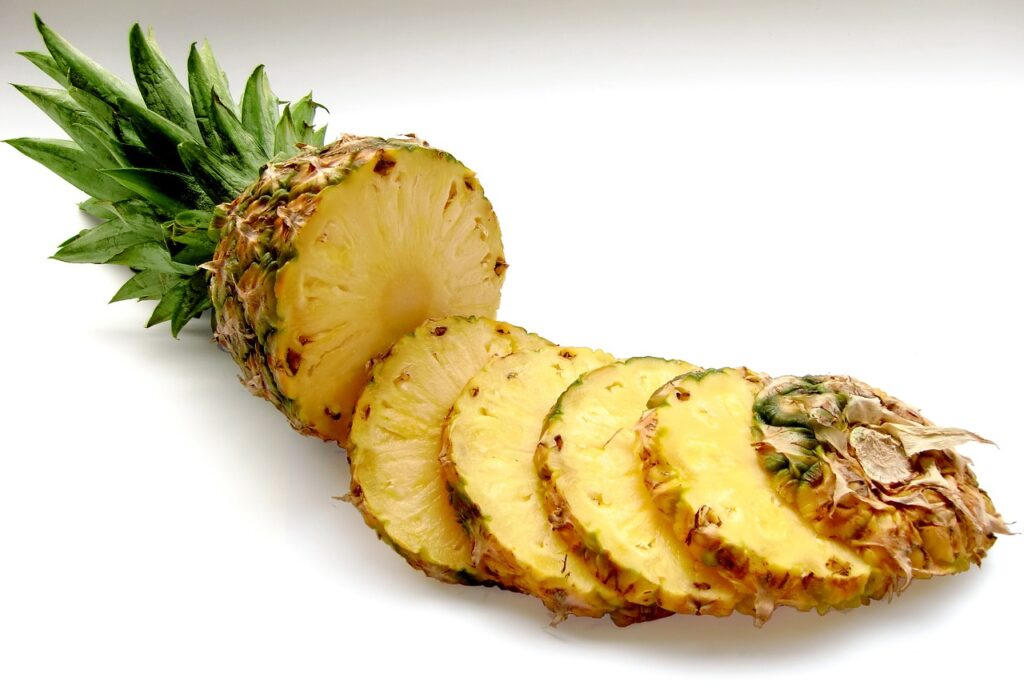
Pineapples are sweet with a zesty kick. Pineapple wines are popular in South Asian countries. Pineapple flesh is sweet and high in sugar but the juice has a high acid content. Most pineapple wine recipes are sweet and can be enjoyed young.
However, many vinters describe the final product as just ok or even blah. You may get better results swapping out water in your recipe for pineapple concentrate to give it more flavor. Unless you know how to work with various country wine recipes to boost flavor, pineapple might be best suited as an added ingredient in other recipes.
Making Wine From Melons
Watermelon Wine
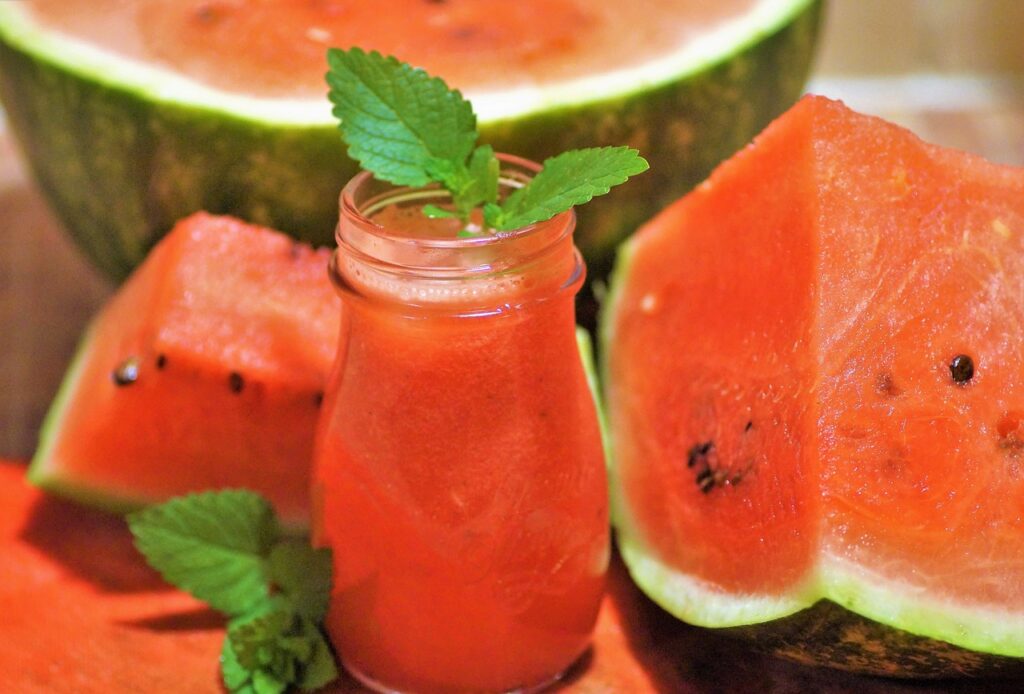
Done right, watermelon wine will be sweet and refreshing with a light finish. The juice may start out looking yellow, but don’t worry. It will end up a light pink in color but It depends on the variety of watermelon used.
Watermelon wine won’t taste like much unless it is at least semi-sweet. You shouldn’t need to add water to your recipe. It is, afterall a watermelon with enough water content on its own. You can use a juicer for best results and to avoid too much pulp. Experienced vintners suggest using a large open fermenter for your primary fermentation to avoid spillover.
Watermelon alone may have a thin body so you may want to mix with other summer fruits such as strawberries. Alternatively, try adding some tannin powder to improve the mouth feel. Give it 2-3 months to age for best flavor.
Some home brewers suggest this is a fruit to stay away from. You will end up with a wine that tastes like watermelon rind if you don’t know what you are doing. Others caution that the natural yeast on watermelons doesn’t play well during fermentation and you should sterilize the juice with campden tablets.
Either way, watermelon wine is probably best for more experienced fruit winemakers.
Honey Dew Wine
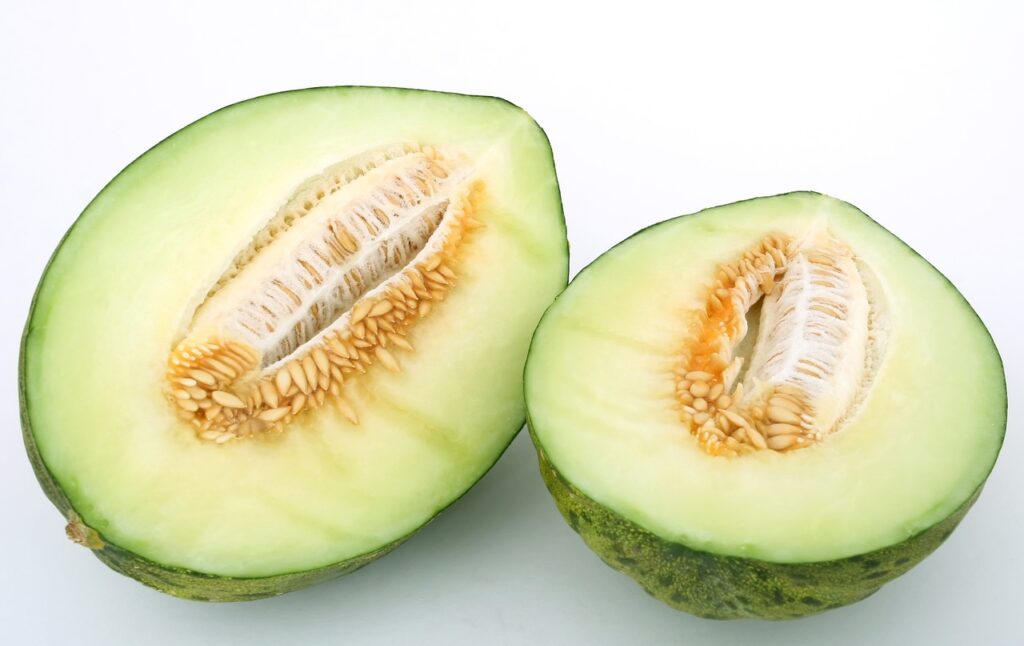
Many wines, such as rose wines, have hints of honeydew melon in their flavor profile. The flavor is generally fresh and sweet.
Working with honeydew melons for winemaking can be a challenge because the melons rapidly spoil at room temperature. It’s suggested to cool the melon before juicing to avoid this.
Fermentation will kill most of the aroma and flavor of honeydew melons. So you should use very ripe Honeydews. You may need to add a fining agent like super-kleer to clarify the mix. It is also a good idea to sweeten the juice with something like raisins.
Best Fruit Wine Making Kit
Making the perfect wine from fruits involves a lot of experimentation. It’s best to start with small batches so you don’t waste too many materials finding the right balance of ingredients.
I recommend using the Master Vintner Fresh Harvest One Gallon Small Batch Fruit Wine Making Kit if you are just getting started with fruit wine making. It has everything you need to make up to 15 one-gallon batches of your favorite fruit wines.
You can find my recommendation for larger fruit wine making kits here.

